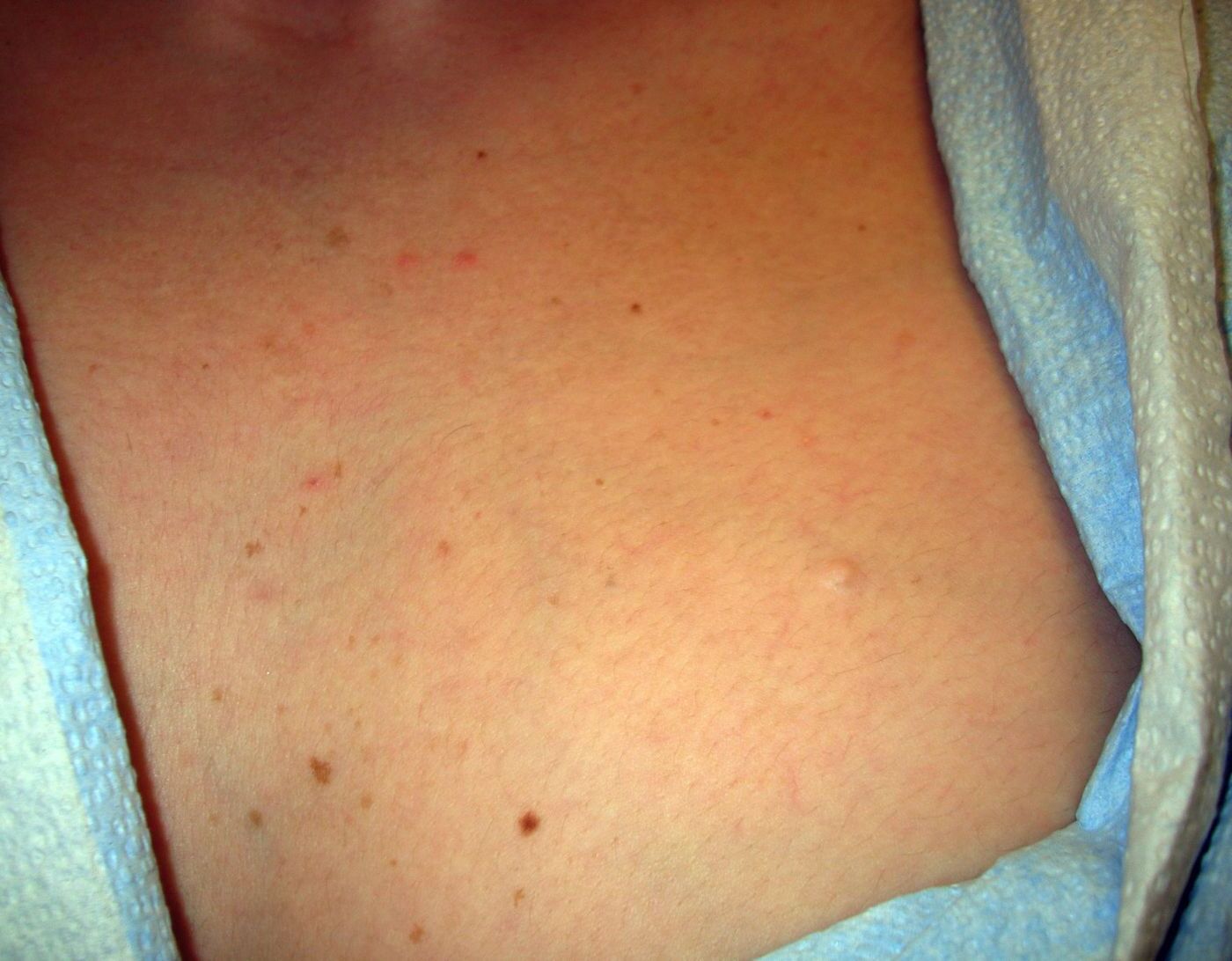
What is Miller Syndrome? Miller Syndrome, also known as postaxial acrofacial dysostosis, is a rare genetic disorder that affects fewer than 1 in 1 million newborns. It is caused by mutations in the DHODH gene, which plays a crucial role in producing pyrimidines, essential building blocks of DNA and RNA. This condition is inherited in an autosomal recessive pattern, meaning both parents must carry the mutated gene. Symptoms include severe craniofacial abnormalities, limb deformities, and respiratory issues. Despite these challenges, intelligence remains unaffected. Treatment focuses on managing symptoms through surgical interventions, hearing aids, and respiratory support. Understanding Miller Syndrome requires a comprehensive approach, involving genetic testing and multidisciplinary care.
Key Takeaways:
- Miller Syndrome is a rare genetic disorder with severe craniofacial and limb abnormalities, affecting fewer than 1 in 1 million newborns. It is crucial to understand its symptoms, diagnosis, and management for early intervention and support.
- While there is no cure for Miller Syndrome, supportive treatments such as surgical interventions, hearing aids, and respiratory support can significantly improve the quality of life for individuals affected by this rare genetic disorder.
What is Miller Syndrome?
Miller syndrome, also known as postaxial acrofacial dysostosis, is a rare genetic disorder. It affects fewer than 1 in 1 million newborns. This condition is characterized by severe craniofacial and limb abnormalities. Here are some key facts about Miller syndrome.
-
Definition and Names
Miller syndrome is also known as Genée–Wiedemann syndrome, Wildervanck–Smith syndrome, or postaxial acrofacial dysostosis. -
Causes
A mutation in the DHODH gene causes Miller syndrome. This gene provides instructions for making an enzyme called dihydroorotate dehydrogenase. -
Incidence
Miller syndrome is extremely rare, affecting fewer than 1 in 1 million newborns. Only about 30 cases have been reported in medical literature. -
Genetic Inheritance
Miller syndrome is inherited in an autosomal recessive pattern. Both copies of the gene in each cell must have mutations for the condition to manifest.
Symptoms and Characteristics
Understanding the symptoms and characteristics of Miller syndrome can help in early diagnosis and management.
-
Symptoms
Children with Miller syndrome often have severe micrognathia (underdeveloped lower jaw), malar hypoplasia (underdeveloped cheekbones), and cleft palate or cleft lip. -
Facial Abnormalities
Facial features include downward-slanting palpebral fissures, ectropion (eyelids that turn out), and eyelid coloboma (a notch in the lower eyelids). -
Limb Abnormalities
Individuals may have absent fifth fingers and toes, webbed or fused fingers or toes (syndactyly), and abnormally formed bones in the forearms and lower legs. -
Additional Features
Other features include supernumerary nipples, extra nipples, and various skeletal abnormalities such as supernumerary vertebrae and rib defects. -
Respiratory Issues
Micrognathia can lead to restricted airways, causing life-threatening breathing problems. -
Intelligence
Miller syndrome does not affect intelligence. However, speech development may be delayed due to hearing impairment.
Diagnosis and Differential Diagnosis
Accurate diagnosis is crucial for managing Miller syndrome effectively.
-
Developmental Impact
The condition affects the development of arms and legs. The role of dihydroorotate dehydrogenase in limb development is not fully understood. -
Diagnostic Challenges
Differential diagnosis includes Treacher Collins syndrome and Nager acrofacial dysostosis. A multidisciplinary team is essential for accurate diagnosis. -
Diagnostic Tests
Genetic testing can confirm the mutation in the DHODH gene. Imaging studies assess the extent of craniofacial and limb abnormalities.
Treatment and Management
While there is no cure for Miller syndrome, supportive treatments can improve quality of life.
-
Treatment
Management focuses on addressing specific symptoms and complications. This may include surgical interventions, orthodontic care, and hearing aids. -
Surgical Interventions
Surgical procedures like cleft palate repair and lip repair can significantly improve feeding and speech development. -
Hearing Aids
Hearing aids are used to address conductive hearing loss, helping improve speech development and communication skills. -
Respiratory Support
Respiratory support, including CPAP or tracheostomy, may be necessary to manage breathing difficulties. -
Multidisciplinary Care
A multidisciplinary team approach is essential. This team typically includes pediatricians, geneticists, orthodontists, otolaryngologists, speech therapists, and respiratory specialists.
Genetic Counseling and Family Support
Genetic counseling and family support play a vital role in managing Miller syndrome.
-
Genetic Counseling
Genetic counseling helps families understand the inheritance pattern and the risk of recurrence in future pregnancies. -
Family History
Understanding family history is crucial for diagnosing Miller syndrome. Parents typically carry one copy of the mutated gene but do not show symptoms. -
Genetic Testing
Genetic testing confirms the diagnosis by analyzing the DHODH gene for mutations. It also helps identify carriers among family members.
Resources and Research
Various resources and ongoing research efforts aim to improve the lives of those affected by Miller syndrome.
-
Rare Disease Registry
Miller syndrome is listed in the Rare Diseases Information Center, providing comprehensive information about the condition. -
Patient Support
Patient support and advocacy resources are available for families. These include organizations that provide emotional support and educational materials. -
Clinical Trials
Clinical trials aim to develop new treatments or improve existing ones. Participation can provide access to cutting-edge therapies. -
Scientific Research
Ongoing research aims to better understand the pathogenesis of Miller syndrome and how mutations in the DHODH gene lead to its characteristic abnormalities.
Historical Background and Public Awareness
Understanding the history and raising public awareness can help in early diagnosis and intervention.
-
Historical Background
Miller syndrome was first described in 1969 by Genée. Wiedemann and Wildervanck further described it in the 1970s, and Miller et al. reported additional cases in 1979. -
Eponym
The condition is named after German physicians Ekkart Genée and Hans-Rudolf Wiedemann. -
Genetic Sequencing
A family with Miller syndrome was the first to be sequenced using whole genome sequencing, highlighting the importance of advanced techniques in diagnosing rare disorders. -
Public Awareness
Raising public awareness about rare genetic disorders like Miller syndrome is crucial for early diagnosis and intervention. -
Future Directions
Future research aims to develop more effective treatments and improve the quality of life for individuals affected by Miller syndrome.
Final Thoughts on Miller Syndrome
Miller Syndrome, a rare genetic disorder, presents significant challenges due to its severe craniofacial and limb abnormalities. Caused by mutations in the DHODH gene, it affects fewer than 1 in 1 million newborns. Symptoms include micrognathia, malar hypoplasia, cleft palate, and limb deformities. Diagnosis often requires genetic testing and a multidisciplinary approach. While there's no cure, treatments focus on managing symptoms through surgical interventions, hearing aids, and respiratory support. Genetic counseling is crucial for families to understand inheritance patterns and risks. Ongoing research aims to uncover more about the condition, potentially leading to better treatments. Public awareness and patient support resources play vital roles in improving the lives of those affected. Understanding Miller Syndrome helps in providing optimal care and support for individuals and their families, paving the way for future advancements in treatment and quality of life.
Frequently Asked Questions
Was this page helpful?
Our commitment to delivering trustworthy and engaging content is at the heart of what we do. Each fact on our site is contributed by real users like you, bringing a wealth of diverse insights and information. To ensure the highest standards of accuracy and reliability, our dedicated editors meticulously review each submission. This process guarantees that the facts we share are not only fascinating but also credible. Trust in our commitment to quality and authenticity as you explore and learn with us.


